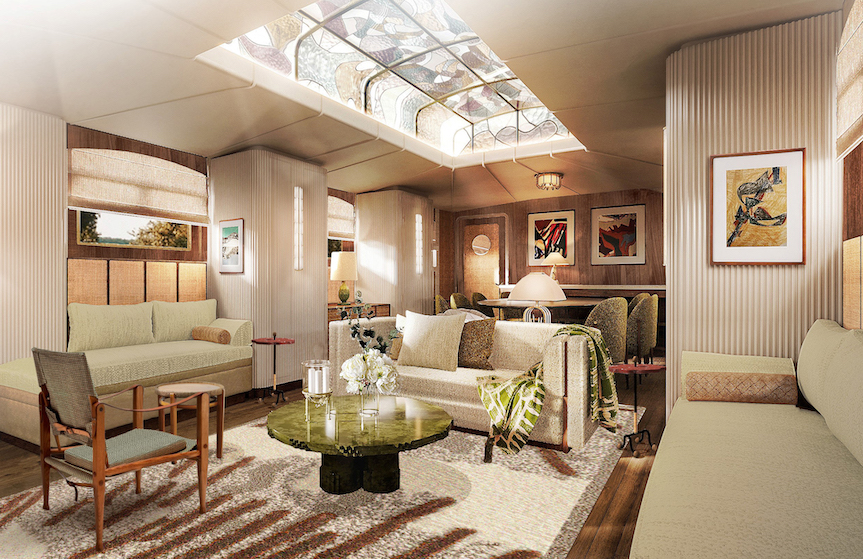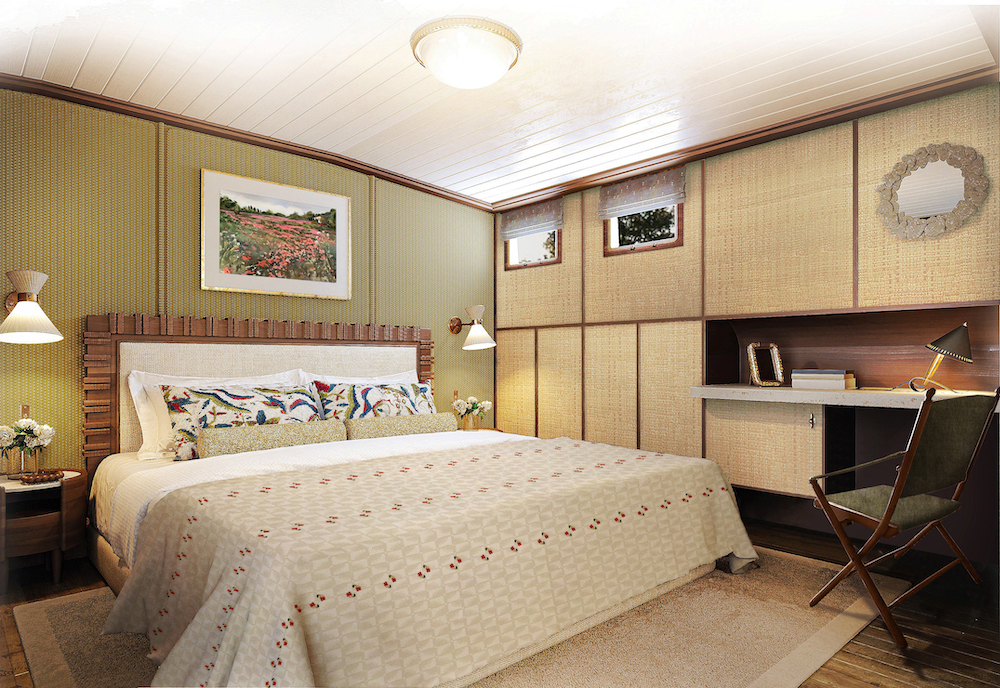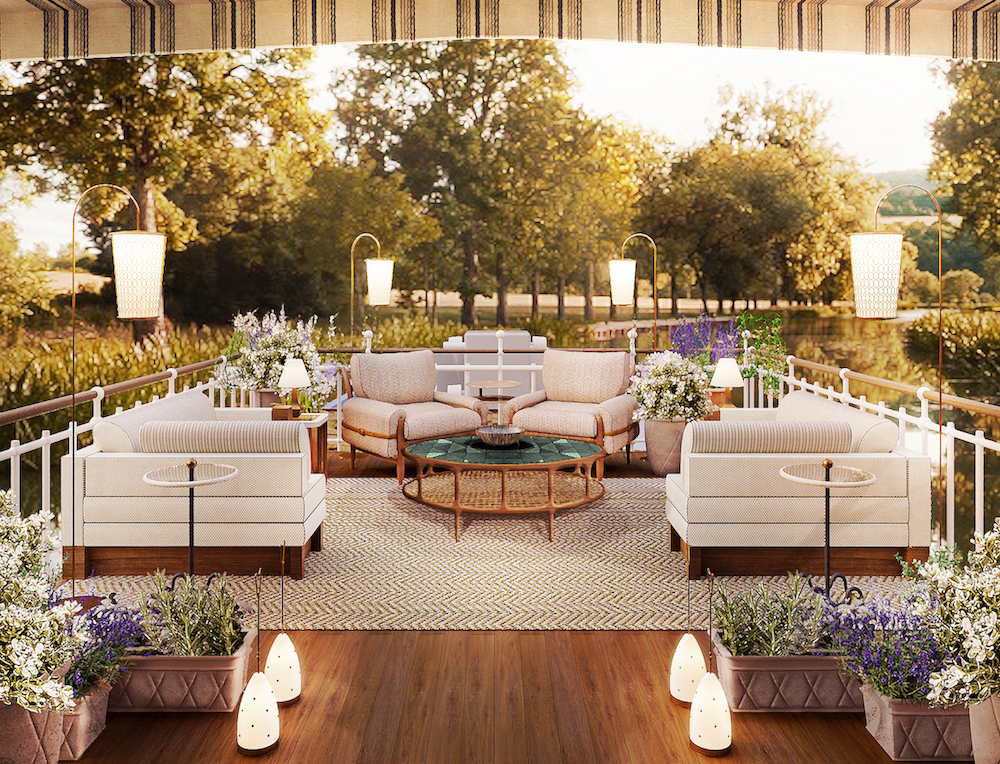
This luxury barge has teamed up with one of the oldest champagne houses for a river cruise like no other
Belmond is launching a luxury barge, part of its unmatched French collection: Coquelicot, A Belmond Boat, Champagne.
Debuting in May 2023, Coquelicot will take guests on a cinematic journey of Champagne in partnership with Maison Ruinart, the world’s oldest champagne house. Featuring three spacious cabins with ensuite facilities, an indoor salon with a champagne bar, and an extensive outdoor deck, Coquelicot will set a new standard of sophistication for slow-paced sailing in France. Coquelicot, A Belmond Boat is available for week-long private charters starting from €82,000 (approximately $79,500).

Designed by successful French duo, Humbert & Poyet, Coquelicot, formerly the Hirondelle barge, will boast three double cabins with marble ensuite bathrooms and an indoor lounge with a champagne bar – stocked with a curated selection of the guests’ preferred labels. The vessel’s top deck will be the social centre for guests to unwind as they meander the calm waterways. Framed by potted local herbs and indigenous wildflowers that root the space in the locale, the deck features two seating lounges, an open kitchen and a shaded dining area to enjoy a menu inspired by seasonal ingredients from trusted local suppliers.

To complement the ever-changing views and create an intimate sanctuary on the water, the barge’s interiors and exteriors will capture the essence of Champagne, with nods to the region’s hues and character. Local fabrics in earthy tones and raw materials will honor Champagne’s agricultural heritage, while fluted walls, decadent interiors and pieces of art will pay homage to the land’s glorious present. Coquelicot’s namesake, the red poppy, will be found in subtle references such as the hand-cut red marble side tables and the tone-on-tone hand-painted petals that line the hallway, while the lounge’s skylight is a celebration of Champagne’s water mapping legacy.
Elevating the river barge journey, Belmond has partnered with Maison Ruinart to offer exclusive access to the first established House of Champagne with a private tasting lunch by Chef In Residence Valérie Radou and guided tours of the historic Taissy vineyard to discover the brand’s latest sustainability initiatives. Guests will disembark Coquelicot for unrivaled access to Taissy vineyard, which has been referenced as early as 1733 in the Maison’s archives. Immersed in the hillsides of the Champagne region, Maison Ruinart, in partnership with Reforest’Action and the University of Reims, launched a pioneering viti-forestry project in 2021 to preserve and regenerate forests in order to restore biodiversity. Also dotting the grounds is a new art installation by German visual artist Nils-Udo, a pioneer of land art. A technical tasting of iconic Maison Ruinart cuvées, led by a Maison Ambassador, will conclude the morning experience in the vineyard.

Back on board, Belmond guests will be treated to a private five-course tasting lunch by Maison Ruinart’s Chef In Residence Valérie Radou and Coquelicot Head Chef. It will be the first time Maison Ruinart’s Chef will be cooking a private ‘four hands’ lunch outside of Maison Ruinart. A true lesson in French art de vivre, this dining experience includes five seasonal dishes inspired by regional cuisine and paired with prestigious cuvées such as Dom Ruinart Blanc de Blancs and Dom Ruinart Rosé. Framed by the idyllic landscape and in the comfort and privacy of their own luxury boat, guests will delve deep into the world of Maison Ruinart, as their ambassador reveals the story, characteristics and technical aspects of each bottle.
Personal Guest Experience Executives will help craft customized itineraries depending on guest preferences. Whether an art-focused tour of Champagne, a historic voyage through the mighty castles, an active adventure on two wheels or a series of epicurean visits to Europe’s most celebrated and most secret wine producers, guests will have the liberty to design their own journey and marvel at the region’s treasures at their own pace. Alternate an al fresco soirée on the top deck with an off-board Michelin-starred restaurant experience or a less inhibited dinner in one of the quaint villages scattered across the region. The all-inclusive journeys include table d’hóte meals, complimentary beverages, all planned excursions escorted by a private guide, and transfer from Paris to the barge. Helicopter transfers from Paris are also available upon request.
